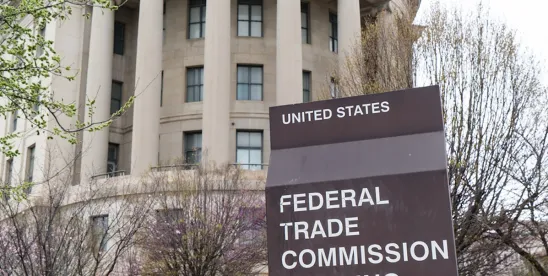The FTC updated its Negative Option Rule last month and gave it a new name to emphasize the expanded scope of programs to which it applies. It will now be the “Rule Concerning Recurring Subscriptions and Other Negative Option Programs.” The updated rule, as the FTC outlines, will now be applicable to nearly all forms of negative option marketing.
While not necessarily a “privacy law,” it is one that is normally on privacy practitioners’ radar, as it impacts disclosures made at the time of collecting personal information. The modifications will have a rolling effective date, between December 15, 2024 (for provisions related to misrepresentations) and April 14, 2025 (for most remaining provisions). Some things for companies to keep in mind:
- Scope of coverage expanded: The FTC divides negative option programs into four categories: (1) prenotification plans; (2) continuity plans; (3) automatic renewals; and (4) free trial conversion offers. The new rule applies to all forms of negative options plans. Unlike the original rule, which applied more narrowly prenotification plans for the sale of goods.
- Expanded transparency obligations: Under the current rule, promotional information about the negative option feature must disclose the material terms of the plan. The new rules take this transparency requirement and applies it to the cancellation process as well. Additionally, the new rule prohibits businesses from misrepresenting any material facts about any goods or services with a negative option feature. Finally, under the new rule, marketing information cannot misrepresent any of the subscriptions features such as how to cancel or cost.
- More notice about how the program works: Under the current rule and as revised, companies are required to disclose the deal’s material terms clearly and conspicuously to subscribers. Similar requirements exist at a state level. The new rule adds more specific requirements. Companies must now disclose any information about the subscription that may influence a customer’s decision to sign up. For example, companies must disclose material terms of the deal before receiving customers’ billing information. They will also need to notify them that they must act to stop charges and the deadline for doing so. (This mirrors requirements that exist for renewal disclosures at a state level.)
- Changes to consent process: Under the current rule, subscribers have to agree to the negative option plan before receiving an invoice and delivery of merchandise. As revised, companies will need to obtain customers’ express proof of consent to the negative option feature before charging them. This mirrors similar requirements at a state level. They should keep proof of their consent for at least three years.
- “Click-to-cancel” requirement: Under the current rule, businesses must allow individuals to cancel negative option membership at any time. The new rule includes a “click-to-cancel” requirement. Namely, business must now provide to consumers a “fast and easy” method of cancellation. Depending on how someone signed up, the cancellation mechanism might be in person, by phone, or online. If a cancellation method is provided online, it must be easy to find. Cancellation should be as easy as signing up and carried out in the same medium.
Putting it into Practice: While the basic concept for negative option programs remains the same, the new rules do introduce some procedural changes. Companies who offer these programs should keep them in mind, including the “click to cancel” requirement for which the new rule has been named.





 />i
/>i

